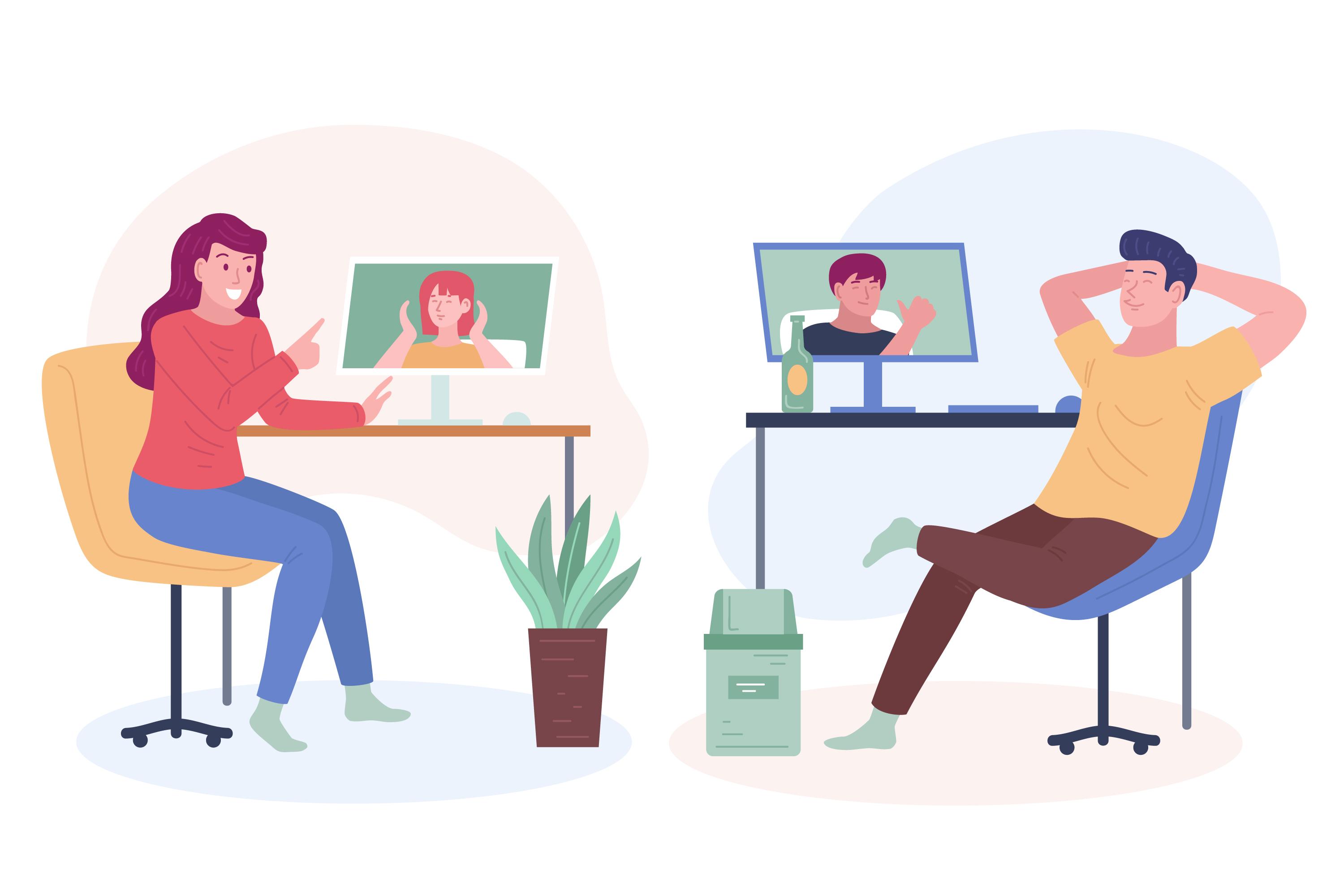Fatigue is a common symptom in today’s work culture. Many people feel tired after long hours of video meetings. Hybrid work has made virtual communication essential, but it also brings challenges.
Poorly managed video conferencing can lead to burnout and other health issues. Smarter video meetings can help reduce these problems.
Fatigue often results from lifestyle factors like poor sleep or unhealthy routines. However, it’s also linked to mental health and medical conditions.
Smarter video meetings also focus on reducing distractions. Many people feel tired during calls because they struggle to concentrate. Background noise, poor audio quality, or unclear visuals can make video meetings harder to follow.
These issues increase fatigue and lead to frustration. Using tools like noise-cancelling features and clear video settings can improve focus and reduce stress.
Read more: The Need for Seamless Browser-Based Video Conferencing Solutions
Another way smarter video meetings help is by encouraging breaks. Long virtual calls without pauses can drain energy quickly. Shorter meetings with planned breaks allow participants to rest or sleep if needed. This approach helps them recharge and stay productive throughout the day.
Hybrid work environments often blur the boundaries between work and personal life. When employees don’t have clear schedules, they may overwork or neglect their health. Smarter meeting practices include setting limits on meeting times and avoiding calls outside working hours. These boundaries protect mental health and prevent burnout.
Fatigue is a common problem for workers in hybrid roles. It’s not just about feeling tired; it can lead to serious health conditions over time. Poor meeting practices can worsen existing medical conditions like migraines or anxiety. Smarter video meetings take these risks into account by creating a more balanced approach to virtual communication.
Good sleep plays a key role in managing fatigue. Employees who don’t get enough rest struggle with focus and productivity. Smarter meetings avoid early mornings or late evenings, giving workers time for proper sleep. This small change can make a big difference in their overall well-being.
Lifestyle factors also affect how someone feels during video calls. A healthy diet, regular exercise, and good hydration improve energy levels. Employers can support these habits by promoting wellness programmes alongside smarter meeting strategies.
Workplace practices closely tie to mental health. Long hours of virtual communication can lead to stress, anxiety, or feelings of isolation. Smarter meetings prioritise connection without overwhelming participants. Features like real-time collaboration tools make teamwork easier while reducing the need for constant meetings.
Medical conditions require flexibility in virtual settings. Smarter meetings allow participants to join in ways that suit their needs, whether through shorter sessions or asynchronous options. This approach ensures inclusivity while protecting individual health.
Video conferencing doesn’t have to be exhausting. Smarter practices create healthier routines that reduce fatigue and support long-term well-being in hybrid work environments. By focusing on quality over quantity, organizations can enable employees to thrive while maintaining effective connections.
Read more: Tips for Successful Hybrid Video Conferences
Long virtual meetings can worsen these issues. When someone spends hours in front of a screen, they may experience eye strain, headaches, or mental exhaustion. These are signs that their body and mind need rest or sleep.
Video meetings can be draining because they demand constant focus. Participants must pay attention to facial expressions, tone of voice, and body language. This level of engagement can be tiring, especially when meetings are frequent or poorly planned.
Hybrid work has increased the reliance on video conferencing for collaboration. While it offers flexibility, it also creates new pressures. Many workers feel tired because they lack breaks between virtual calls. This fatigue affects their productivity and overall mental health.
Good sleep is essential for managing fatigue and staying focused during video meetings. Without proper rest, people struggle to concentrate and may develop health conditions over time. Employers must recognise the importance of balancing work schedules with healthy habits.
Smarter video meetings focus on reducing unnecessary stress. Shorter sessions with clear agendas help participants stay engaged without feeling overwhelmed. When teams plan meetings carefully, they avoid wasting time and energy.
Technology also plays a role in improving video conferencing experiences. Features like real-time transcription reduce the need for constant note-taking. Virtual backgrounds and noise-cancelling tools create a more comfortable environment for participants.
Mental health is closely tied to workplace practices. Long hours of virtual communication can lead to anxiety or burnout if not managed well. Smarter video meetings prioritise efficiency while giving employees room to breathe.
Lifestyle factors like exercise and good nutrition also impact how someone feels during video calls. A balanced routine helps workers stay energised throughout the day. Employers should encourage healthy habits alongside smarter meeting practices.
Medical conditions can worsen fatigue during long video conferences. People with chronic illnesses or mental health challenges may find such sessions particularly draining. Smarter meetings consider these needs by allowing flexibility in participation.
Read more: Innovative Uses of Video Conferencing in the Corporate World
Hybrid work environments must address the challenges of virtual communication to protect employees’ well-being. Smarter video meetings are part of the solution. They reduce fatigue and improve productivity by focusing on quality over quantity.
When workers feel tired after endless calls, it’s time to rethink meeting strategies. Rest or sleep should always be prioritised alongside effective communication tools. Smarter practices help teams stay connected without compromising their health.
By investing in smarter video conferencing solutions, companies show they care about their employees’ mental health and overall well-being. This approach benefits both individuals and organisations in the long run.
Fatigue is a common issue in modern work settings, but it doesn’t have to be inevitable. Smarter video meetings create healthier routines that reduce stress and improve focus during hybrid workdays.
Image credits: Freepik
